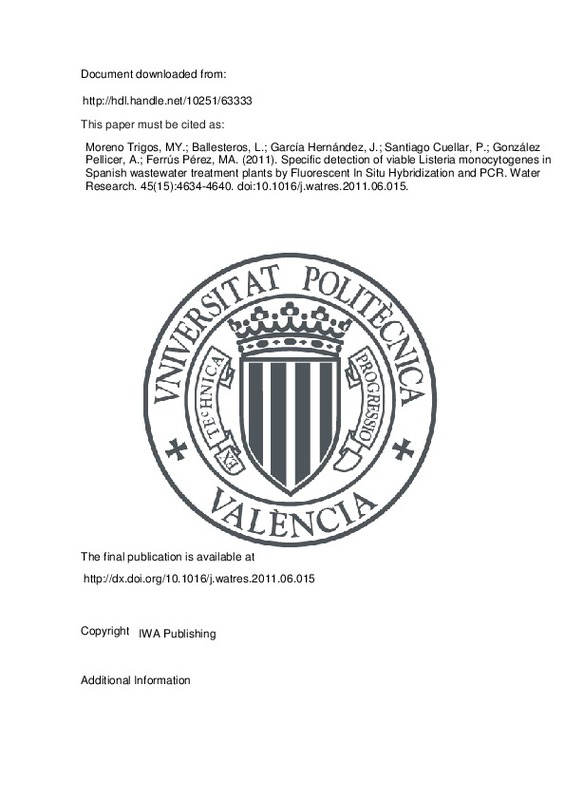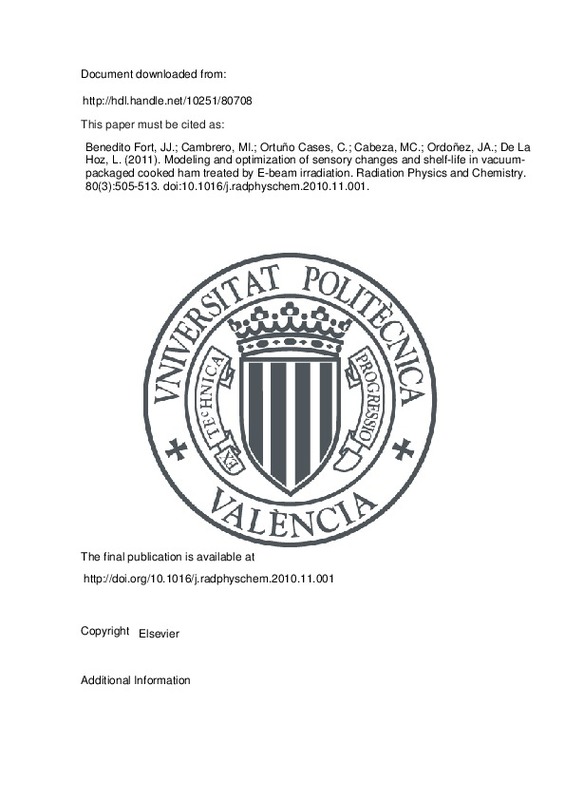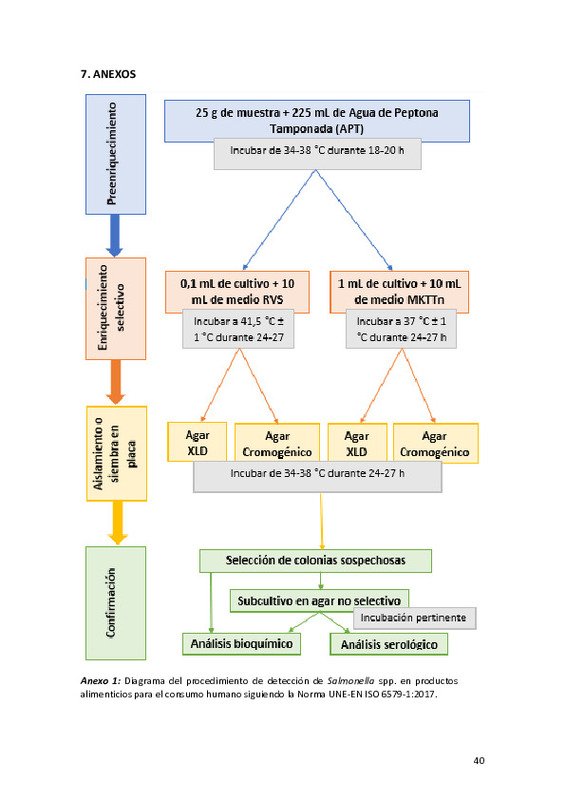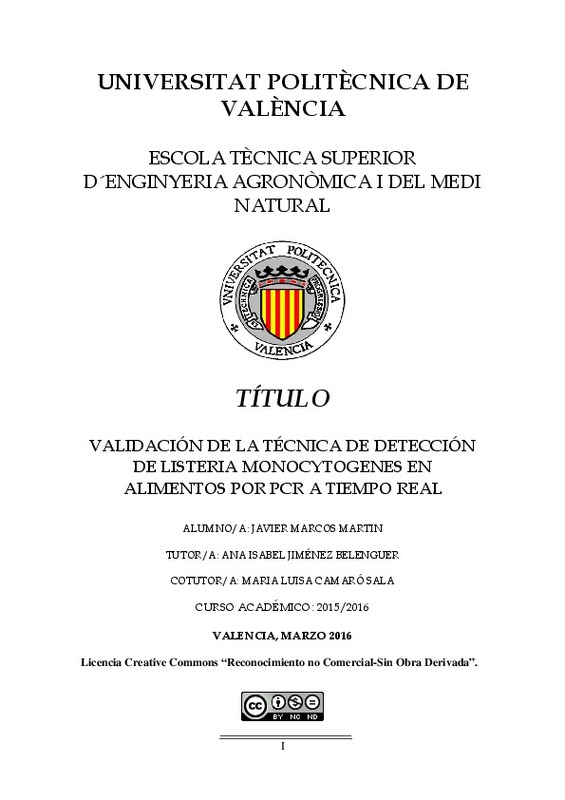Moreno Trigos, MY.; Ballesteros, L.; García Hernández, J.; Santiago Cuéllar, P.; González Pellicer, A.; Ferrús Pérez, MA. (2011). Specific detection of viable Listeria monocytogenes in Spanish wastewater treatment plants by Fluorescent In Situ Hybridization and PCR. Water Research. 45(15):4634-4640. https://doi.org/10.1016/j.watres.2011.06.015
Por favor, use este identificador para citar o enlazar este ítem: http://hdl.handle.net/10251/63333
|
Título:
|
Specific detection of viable Listeria monocytogenes in Spanish wastewater treatment plants by Fluorescent In Situ Hybridization and PCR
|
|
Autor:
|

 Moreno Trigos, Mª Yolanda
Ballesteros, Lorena
Moreno Trigos, Mª Yolanda
Ballesteros, Lorena

 García Hernández, Jorge
Santiago Cuéllar, Paula
García Hernández, Jorge
Santiago Cuéllar, Paula

 González Pellicer, Ana
González Pellicer, Ana
 Ferrús Pérez, Mª Antonia
Ferrús Pérez, Mª Antonia
|
|
Entidad UPV:
|
Universitat Politècnica de València. Instituto Universitario de Ingeniería del Agua y del Medio Ambiente - Institut Universitari d'Enginyeria de l'Aigua i Medi Ambient
Universitat Politècnica de València. Departamento de Biotecnología - Departament de Biotecnologia
|
|
Fecha difusión:
|
|
|
Resumen:
|
Listeria monocytogenes detection in wastewater can be difficult because of the large amount of background microbiota and the presence of viable but non-culturable forms in this environment. The aim of this study was to ...[+]
Listeria monocytogenes detection in wastewater can be difficult because of the large amount of background microbiota and the presence of viable but non-culturable forms in this environment. The aim of this study was to evaluate a Fluorescent In Situ Hybridization (FISH) assay combined with Direct Viable Count (DVC) method for detecting viable L. monocytogenes in wastewater samples, as an alternative to conventional culture methods. 16S rRNA sequence data were used to design a specific oligonucleotide probe. In order to assess the suitability of the method, the assays were performed on naturally (n = 87) and artificially (n = 14) contaminated samples and results were compared to those obtained with the isolation of cells on selective media and with a PCR method. The detection limit of FISH and PCR assays was 10 4 cells/mL without enrichment and 10 cells/mL after enrichment. A total of 47 samples, including 3 samples from effluent sites, yielded FISH positive results for L. monocytogenes. Using DVC-FISH technique, the presence of viable L. monocytogenes cells was detected in 23 out of these 47 FISH positive wastewater samples. PCR and culture methods yielded 27 and 23 positive results, respectively. According to these results, FISH technique has the potential to be used as a sensitive method for the detection and enumeration of L. monocytogenes in environmental wastewater samples. © 2011 Elsevier Ltd.
[-]
|
|
Palabras clave:
|
Listeria monocytogenes
,
PCR
,
Wastewater
,
Wastewater samples
,
Wastewater treatment plants
,
Assays
,
Cell culture
,
Diseases
,
Fluorescence
,
Listeria
,
Oligonucleotides
,
Polymerase chain reaction
,
RNA
,
Water treatment plants
,
Effluents
,
Bacterial RNA
,
RNA 16S
,
Bacterium
,
Detection method
,
Effluent
,
Polymer
,
Probe
,
Sampling
,
Waste treatment
,
Water treatment
,
Arcobacter
,
Arcobacter butzleri
,
Article
,
Bacterial cell
,
Bacterial count
,
Bacterium culture
,
Bacterium detection
,
Campylobacter coli
,
Campylobacter jejuni
,
Cell isolation
,
Cell viability
,
Citrobacter freundii
,
Comparative study
,
Controlled study
,
Direct viable count
,
Enterobacter cloacae
,
Enterococcus faecalis
,
Escherichia coli
,
Fluorescence in situ hybridization
,
Helicobacter pylori
,
Listeria innocua
,
Listeria ivanovii
,
Micrococcus luteus
,
Nonhuman
,
Oligonucleotide probe
,
Priority journal
,
Pseudomonas aeruginosa
,
RNA sequence
,
Salmonella enterica
,
Spain
|
|
Derechos de uso:
|
Reserva de todos los derechos
|
|
Fuente:
|
Water Research. (issn:
0043-1354
)
|
|
DOI:
|
10.1016/j.watres.2011.06.015
|
|
Editorial:
|
IWA Publishing
|
|
Versión del editor:
|
http://dx.doi.org/10.1016/j.watres.2011.06.015
|
|
Código del Proyecto:
|
info:eu-repo/grantAgreement/MICINN//AGL2008-05275-C03-02/ES/ANALISIS INTEGRADO DE RIESGOS EN AGUA Y ALIMENTOS PARA BACTERIAS PATOGENAS EMERGENTES POR METODOS MOLECULARES: DESINFECCION, SUPERVIVENCIA Y TRAZABILIDAD/
|
|
Agradecimientos:
|
This work was supported by the grant AGL2008-05275-C03-02 (national and FEDER funds) from Ministerio de Ciencia e Innovacion, Spain.
|
|
Tipo:
|
Artículo
|







![[Cerrado]](/themes/UPV/images/candado.png)





